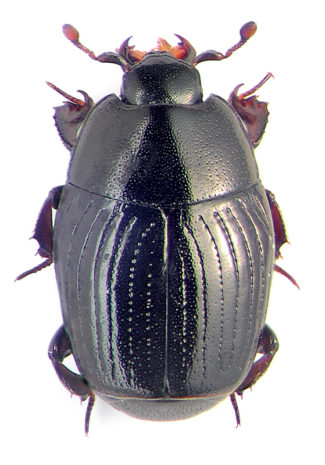Learn all about hister beetle bite, control, life cycle, size, scientific name. There are many types of hister beetles found worldwide; an estimated 4000 species or so exist with several hundred here in the United States.
Most all are predaceous and feed on the larvae of other insects as well as eggs and pupae. They seemingly love ants, termites and maggots of any common house fly but will also eat dung, carrion and rotting fungi.
Around the States the most common species we find around the home seem to target fly maggots and pine bark beetles. In fact, hister beetles are able to reveal valuable information used by CSI labs since certain species will arrive to a rotting carcass only when certain stages of decomposition have occurred. Based on their presence or absence, it can be deduced just what stage of decomp a body is at which can prove important for establishing a time line from the time of death.
Hister beetles are found throughout the world in various habitats. Histeridae have been located in North America, Central America, Europe, Asia, and Australia, but each Hister beetle occupies certain niches.
The beetles live in dung, carrion, dead vegetation, sandy areas, under tree bark, mammal burrows, and ant/termite colonies. Charactertistics of the Hister beetle are dependent upon its habitat. For example, the flat Hister beetles are found under bark, while the cylindrical beetles are not. Shape of the beetle will vary from species to species.
What is Hister Beetle?
Hister beetles are mostly round, black, shiny beetles that feed on other insects and plants like grass. They’re quite small.
Hister Beetle Control
Hister beetles are quite tough and sturdy and will hide out of sight in any little crack you have along baseboards and ceiling molding. To insure they’re not avoiding people in these cracks, treat with PT-MICROCARE. This Pyrethrin based product will both flush and kill any that might be hiding and it will also provide a week or two of residual. This way you’ll have something in place to help protect the room from further histers getting inside. You can also use the Bifen inside and it would be suggested if you locate an attic or crawl space that might be harboring a food supply for them. Spraying down the insulation and/or walls of the area will both prevent migrating maggots from living to pupate and kill off foraging histers. Again, the best solution will be the removal of the food source but if you can’t find one, treating the active areas with Microcare and Bifen will keep hister beetle numbers down.
Hister Beetle Life Cycle
Hister beetles have a complete metamorphic life cycle. Females lay eggs. The average time of development from Egg to adult at 30 degrees Celsius is 20.5 days. The eggs of most species are off-white and oval in shape. The egg takes on average 3.8 days to develop into the first instar. The chorion is shiny and smooth. In certain species like Epierus or Platylomalus it can look pale brown and be leathery in texture.
The larval stage of the beetle typically goes through two instars, the second instar is the longest stage of its entire development, taking up 39% of the overall development time. It takes 5.1 days on average for the first instar to develop into the second. The larval form of the insect will range in length from three millimeters to several centimeters. They have a membranous body with a limited amount of sclerotization around the head. There is some pigmentation around the body and it is horizontally segmented. The legs are short and do not help much in locomotion. They move mostly through muscular contraction.
The pupal form of the beetle is similar in appearance to the adult form. They have outer cells produced in the larval stages that are reinforced with proteinaceous cement. This makes their outer shell harder and protects them during this vulnerable stage. While they pupate they breathe through spiracles on the abdomen. The beetle is non-feeding and immobile in this stage, as their internal structure is breaking down and rebuilding to its adult form. Under good temperature conditions the Hister beetle will stay in the pupal stage for about a week.
Hister Beetle Size
They are shiny black, oval, and from 0.5 to 10 mm (0.02 to 0.4 inch) long. The beetles are so tiny that 250 can fit in a milliliter. They are so small when they tuck their legs under themselves they are mistaken for tiny seeds.
Hister Beetle Scientific Name
Hister beetle scientific name is Carcinops pumilio (Erichson) is a predator and natural enemy of the pestiferous house fly, Musca domestica Linnaeus. Carcinops pumilio has a broad world distribution and is associated with wild bird nests and bat guano piles. This species’ ability to limit house fly populations in poultry production settings led to its study as an augmentative biological control agent



